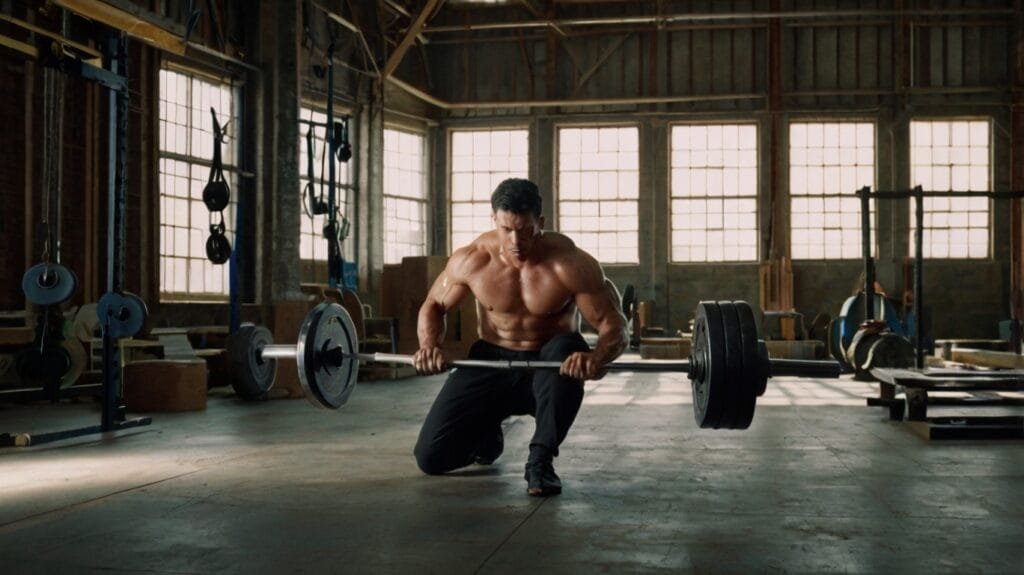Building Strength vs. Building Size: What’s the Difference?
When stepping into the gym, everyone has their unique goals. Some aim to lift heavier weights and build sheer strength, while others want to sculpt their muscles for size and aesthetics. While these objectives might seem similar, they are distinct paths that require tailored approaches. Understanding the difference between building strength and building size is crucial to achieving your fitness goals.

Strength Training: Focused on Power
Strength training is all about increasing your ability to lift heavier weights over time. The goal is not necessarily to grow bigger muscles but to enhance muscle efficiency and power. This approach primarily targets the development of neural adaptations—how effectively your brain communicates with your muscles.
Key Principles of Strength Training:
- Low Reps, Heavy Weights:
- Perform 3-6 reps per set at 80-90% of your one-rep max (1RM).
- Focus on compound movements like squats, deadlifts, bench presses, and overhead presses.
- Long Rest Periods:
- Rest 2-5 minutes between sets to allow full recovery and maximize strength output.
- Progressive Overload:
- Gradually increase the weight you lift to push your muscles beyond their comfort zone.
- Neural Efficiency:
- Strength training enhances motor unit recruitment, enabling your muscles to contract more forcefully.
Benefits of Strength Training:
- Increased functional strength for daily activities and sports.
- Greater bone density and joint stability.
- Enhanced metabolic rate due to increased muscle density.
Hypertrophy Training: Building Size
Hypertrophy training focuses on increasing the size of your muscles by causing micro-tears that lead to growth during recovery. This style of training is what most bodybuilders follow to achieve a more sculpted and muscular physique.
Key Principles of Hypertrophy Training:
- Moderate Reps, Moderate Weights:
- Perform 8-12 reps per set at 65-75% of your 1RM.
- Include a mix of compound and isolation exercises to target specific muscle groups.
- Shorter Rest Periods:
- Rest 30-90 seconds between sets to keep muscles under tension for longer durations.
- Time Under Tension (TUT):
- Focus on controlled movements, ensuring muscles are under strain for 30-60 seconds per set.
- Volume and Variety:
- Higher training volume (more sets and reps) with periodic variation in exercises keeps muscles adapting and growing.
Benefits of Hypertrophy Training:
- Enhanced muscle size and definition.
- Improved muscular endurance.
- Aesthetic appeal and balanced physique development.
The Overlap: Can You Do Both?
While strength and hypertrophy training have distinct goals, they’re not mutually exclusive. Many athletes and gym-goers combine both approaches to enjoy the benefits of strength and size. This is often referred to as powerbuilding, a hybrid training style.
Tips for Combining Strength and Size Training:
- Start your workout with heavy compound lifts to build strength.
- Follow up with moderate-weight isolation exercises for hypertrophy.
- Use periodization, alternating phases of strength and hypertrophy focus every few weeks.
Which Should You Choose?
The right approach depends on your goals:
- If you want to lift heavy and improve overall power, prioritize strength training.
- If you’re aiming for a bigger, more defined physique, focus on hypertrophy training.
- If you want the best of both worlds, incorporate elements of both into your routine.
Final Thoughts
Both strength and hypertrophy training offer unique benefits, and the choice between them comes down to your personal fitness objectives. By understanding the principles behind each approach, you can create a workout plan that aligns with your goals and keeps you motivated. Whether you want to lift heavier or grow bigger, consistency, proper nutrition, and recovery will always be the keys to success.

